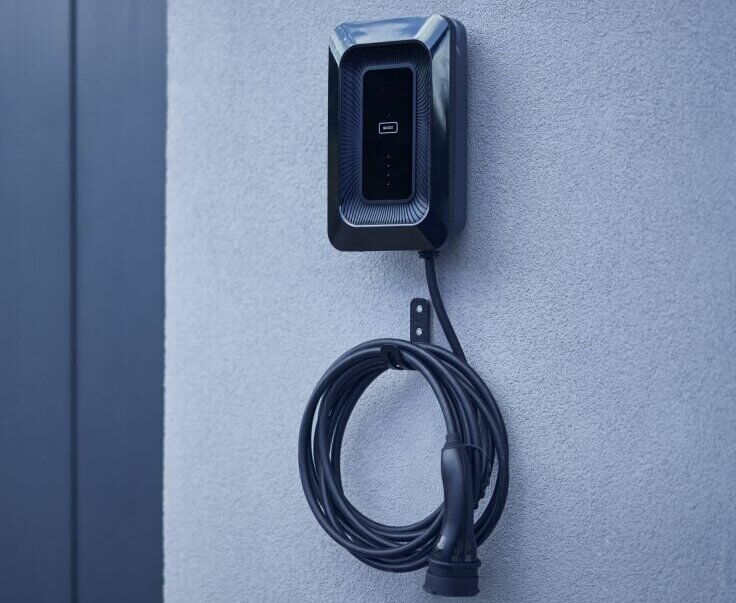The electric vehicle (EV) market is rapidly expanding, and with it, the demand for efficient and user-friendly charging solutions. Whether you’re a new EV owner or looking to upgrade your charging setup, understanding the differences between tethered and untethered EV chargers is crucial. Both types offer unique benefits and potential drawbacks, making the choice between them an important decision that can impact your daily convenience, cost, and overall EV experience.
A tethered EV charger comes with a permanently attached charging cable. This means that the cable is an integral part of the charger, usually coiled or stored neatly when not in use. Tethered chargers are often preferred for their simplicity and ease of use. You don't need to worry about finding a compatible cable every time you charge your vehicle—just plug in and charge.
These chargers are commonly found in residential settings where a single EV is charged regularly. The fixed cable length, usually around 5 to 7 meters, is designed to suit most home installations, allowing for quick and hassle-free charging.

An untethered EV charger, on the other hand, does not come with a permanently attached cable. Instead, it features a socket into which a separate charging cable must be plugged. This type of charger offers greater flexibility, as it allows you to use different cables that may be better suited for various EV models or charging locations.
Untethered chargers are commonly installed in public or shared spaces where multiple types of EVs might be charged. They are also preferred by EV owners who want the flexibility to switch between different charging cables or prefer to store the cable separately when not in use.

The primary difference between tethered and untethered EV chargers lies in the charging cable. A tethered charger has a built-in cable that is permanently attached, while an untethered charger requires the user to provide and connect their own cable. This distinction has several implications in terms of convenience, cost, flexibility, and maintenance.
Tethered chargers offer a plug-and-go convenience, reducing the steps involved in charging your EV. Untethered chargers, while requiring an additional step of connecting a cable, offer greater versatility, allowing for the use of different cables to accommodate various charging needs or EV models.
Another difference is in installation. Tethered chargers are generally easier to install and require less space management for the cable. Untethered chargers, however, may offer a cleaner look when not in use, as the absence of a fixed cable can reduce visual clutter.

The built-in cable means you don’t have to worry about carrying or finding a cable. This makes charging quick and straightforward.
Simply plug in and charge. There’s no need to attach a separate cable each time.
Tethered chargers often come with a dedicated cable management system, keeping things tidy and reducing the risk of tripping over loose cables.
Since the cable is fixed, it’s less likely to be lost or damaged compared to a separate cable that might be carried around.
You’re limited to the cable length provided, which may not be ideal for all setups.
The tethered cable may not be suitable for all EV models, especially if you have more than one vehicle with different charging needs.
The permanently attached cable can suffer from wear and tear over time, requiring repair or replacement of the entire charger unit.
Untethered chargers allow you to use different cables, making them versatile for various EV models and charging situations.
You can take your charging cable with you, allowing for charging at other locations without worrying about compatibility.
If the cable gets damaged, you can simply replace the cable instead of the entire charger.
When not in use, the absence of a fixed cable can make for a cleaner and less cluttered installation.
You need to connect your own cable each time, which adds an extra step to the charging process.
There’s always the chance that you might forget to bring the cable with you, especially if you frequently move between charging locations.
You’ll need to store the cable separately, which can be cumbersome and lead to misplaced or damaged cables.
Untethered chargers can be more expensive initially, especially when factoring in the cost of a separate cable.
Deciding between a tethered and untethered EV charger depends on your specific needs and preferences. If you value convenience and have a dedicated charging spot at home, a tethered charger might be the best option. The plug-and-go simplicity, combined with a tidy installation, can make daily charging a breeze.
However, if you have multiple EVs with different charging needs or you frequently charge at different locations, an untethered charger offers greater flexibility. The ability to use different cables and replace them as needed can make untethered chargers a more versatile and long-term solution.
In shared or public spaces, untethered chargers are often the preferred choice due to their ability to accommodate a wide range of vehicles and charging requirements.
Both tethered and untethered EV chargers have their unique advantages and drawbacks, making the decision between them a matter of personal preference and specific use case. Tethered chargers excel in simplicity and convenience, while untethered chargers offer unmatched flexibility and adaptability. As the EV market continues to evolve, the choice between tethered and untethered chargers will remain a key consideration for EV owners, influencing not only the charging experience but also the overall satisfaction with electric vehicle ownership.
A tethered EV charger comes with a permanently attached charging cable. This means that the cable is an integral part of the charger, usually coiled or stored neatly when not in use. Tethered chargers are often preferred for their simplicity and ease of use. You don't need to worry about finding a compatible cable every time you charge your vehicle—just plug in and charge.
